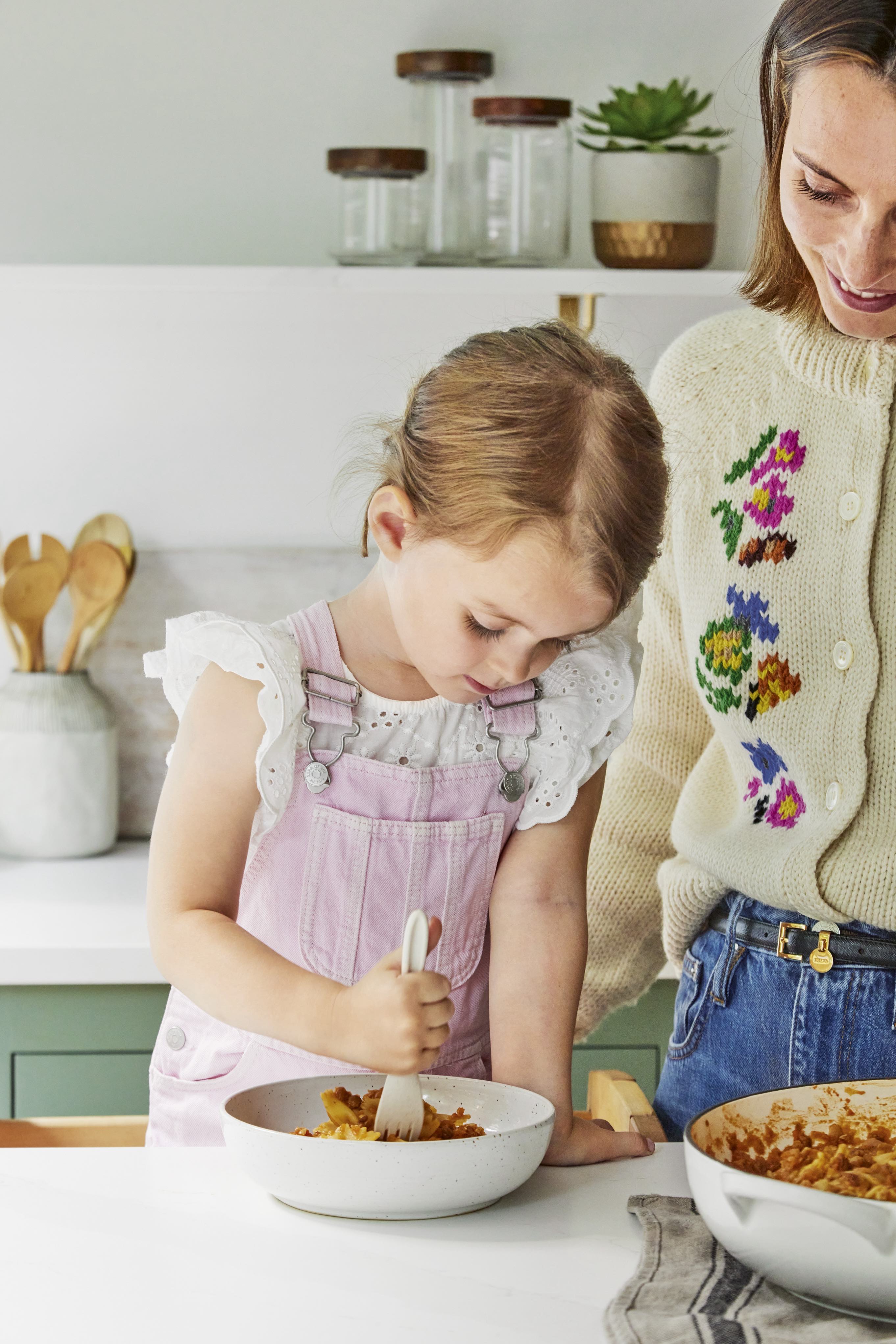Every parent wants their child to be happy and healthy, which includes eating and enjoying a wide variety of foods. But of course this doesn’t always go according to plan.
You’ve spent time preparing a nutritious meal, only to have your little one turn up their nose before taking a single bite. It can be frustrating, and even disheartening, and leave you wondering if your child will ever enjoy a balanced diet. Rest assured, you are not alone!
Research shows that up to one third of children around the age of two could be described as ‘fussy eaters’ (1). Food refusal is a normal part of toddler development (2), and most kids will experience a phase of being more ‘fussy’ or ‘selective’ with their foods.
While this can be stressful, especially when you’re eager to ensure your child gets the nutrients they need, there are strategies you can try to help them become more open to new flavours and textures.
Here are some practical, tried-and-true tips to encourage your kids to be more adventurous at mealtimes:
1. Model healthy eating habits
Eat together as a family as often as you can, and aim to all eat the same foods. Kids learn by observing, so seeing you enjoy a variety of vegetables and healthy options sets a powerful example. I know this may sound obvious, but as a parent you need to eat the vegetables that you’d like your children to eat! Consistently offering the same foods to everyone helps normalise the behaviour and builds trust and familiarity.
2. Create a positive mealtime environment
Shift the focus away from what your child is eating and make the mealtimes about togetherness and enjoyment. Talk about other things - school, friends, hobbies, family plans - and take the pressure off the food. This creates a relaxed environment where kids feel less anxious about trying something new.
3. Involve kids in food prep
Kids are more likely to eat foods they’ve had a hand in preparing. Let them wash veggies, tear leaves and herbs, stir sauces, or even chop softer ingredients with child-friendly tools. Familiarity breeds comfort, and if they’ve helped create the meal, they’ll be more willing to taste it.
4. Start small
Introduce new foods in tiny portions - like a single pea or a small bite of broccoli. Don’t focus on quantity right away, as this is just a starting point. Even a tiny taste is a step forward, and keeping portions small prevents overwhelming your child.
5. Offer (a few) choices
Give your child some control by offering small, manageable choices: “Would you like peppers or carrots with our meal today?”. You don’t have to let your kids choose the entire meal but providing a choice within boundaries empowers them, which in turn helps prevent power struggles at the table.
6. Make food fun
You don’t need to spend hours creating elaborate food art, but a little fun goes a long way. Stack cucumber slices into a tower or make a smiley face with fruit on top of porridge. This lighthearted approach helps kids feel relaxed around food and more willing to try it.
7. Choose a 'colour of the week'
Encourage your kids to explore new fruits and vegetables in meals or snacks by focusing on a ‘colour of the week’. This playful challenge can spark excitement about trying new foods, and a trip to the supermarket or farmer’s market to see the wide variety of colourful fruits and veggies on display makes it even more engaging.
8. Respect preferences but don't cater
It’s important to offer familiar foods at mealtimes so your child isn’t overwhelmed. But continue to introduce new foods alongside their favourites. For instance, if they love pasta, serve it with a new vegetable stirred through. This balance ensures they feel secure but still have opportunities to explore new tastes.
9. Serve meals 'family-style'
Put all the dishes in the middle of the table and allow everyone to serve themselves (younger ones may need some assistance). Giving kids the autonomy to pick what goes on their plate makes them feel more in control and reduces the pressure to eat any one particular item. You can even use kid-friendly utensils, such as small tongs, to make it more fun.
By adopting a few simple strategies, you can create a more positive, stress-free mealtime experience that encourages your little one to expand their palate without the battles. Remember, it’s a process, so celebrate small wins and stay patient!
Paula Hallam, Registered Dietitian, BSc (Med) (Hons) RD, PG Cert
References:
https://www.gosh.nhs.uk/conditions-and-treatments/general-health-advice/food-and-diet/fussy-eaters/
Infant and Toddler Forum: Why toddlers refuse food https://infantandtoddlerforum.org/wp-content/uploads/2020/02/ITF107-Factsheet-2_1-Why-Toddlers-Refuse-Food-Dec19-v1.pdf
















